Accompanying the revival of retro design in the West, sign writing and gold leaf gilding have come back into fashion, appearing on specialty and boutique stores. It seems that this trend has recently made its way to Japan, with shops in the fashionable areas of Shibuya, Yoyogi and Omotensando adorning their windows with eye catching golden lettering. But what does this trend mean in Japan compared to its western origins?
First a little history:
With roots in ancient China and Egypt, gold gilding is a method by which thin gold leaf is applied to a surface such as a statue, mirror frame or glass. Japan has a rich history of gold gilding (kinpaku, 金箔) on religious icons, folding screens (byoubu, 屏風) and buildings. Perhaps the most famous example of gilding in Japan would be the Golden Pavillion (Kinkaku-ji, 金閣寺) in Kyoto , which owes its name to the top two stories being gilded in gold, inside and out.
However, with glass sheeting only beginning to be produced in the late 19th Century in Japan the tradition of glass gilding did not develop as it did in the West which makes it curious to see it being used now.
The use of gilding in signage was popularised in England, Europe, America and Australia, peaking in the late 19th Century and continuing into the early 20th Century. It was then replaced by easier to produce print media. Today the application of gold leaf gilding evokes a strong sense of history and place, lending an air of authenticity to a brand or business. It also lends an aspect of luxury to the business as it is a laborious and expensive process.
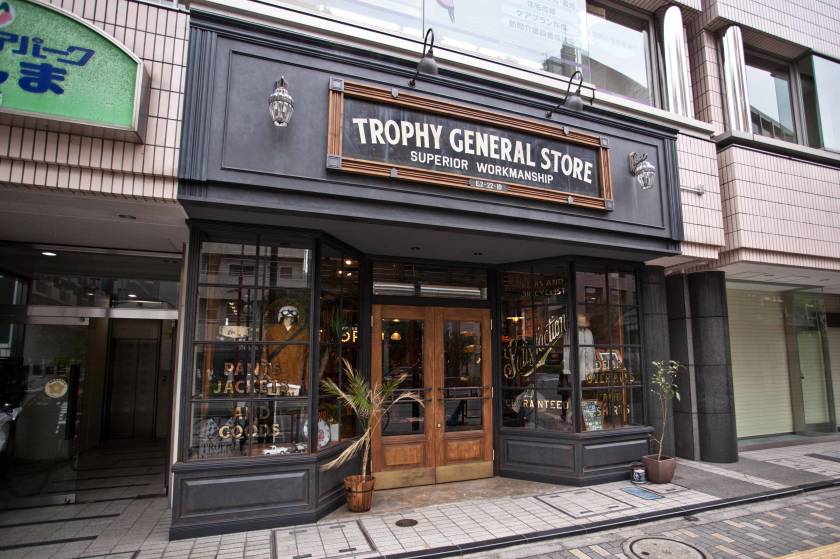
One of the most extensive examples is the Trophy General Store in Shibuya, a mens wear brand which specialises in high quality American inspired denim and clothing. The front windows of this store are all treated with a gilding effect and the shop itself mimics a shopfront from the early 20th century.
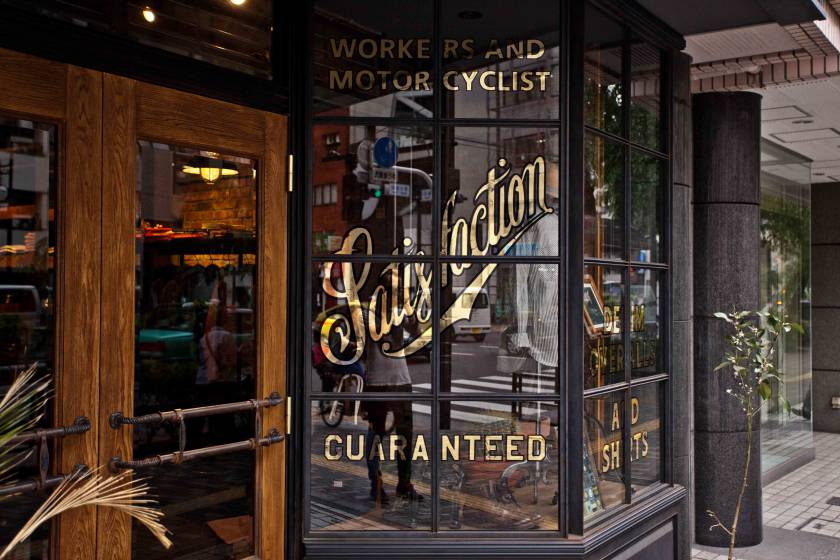
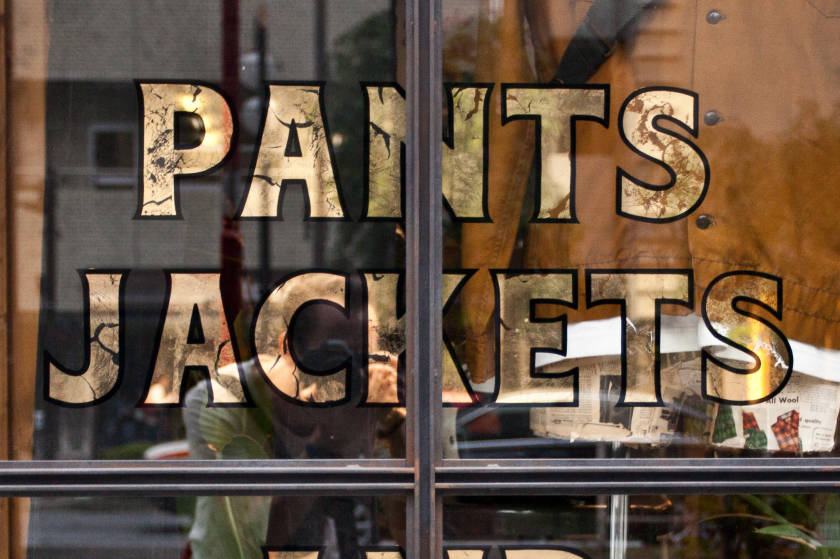
The Trophy Clothing brand uses language which speaks of pride, quality and craftsmanship, which is reflected in their products. The combination of Western inspired fashion and a focus on craftsmanship in the brand makes for a good match with gilding.
Looking at the gilding itself it has been crafted to visually connect with both 1930’s signage and the visual language of denim brands. The gilding has been artificially antiqued which really drives home the feeling of an established business that has been in place for some time. The language used directly highlights the products sold and “Satisfaction guaranteed” is part of the Trophy Clothing brand promise.
Overall this is an effective application that ties in well with the brands message and image.
Paris Miki in Shibuya is another large scale application of gilding. Applied to a modern shopfront it does not look out of place, and using a 1950’s Cadillac and other Americana in the window display it really ties the design together well. This example draws inspiration from both Art Deco, seen in the framing device, and 1950’s signage and typography.

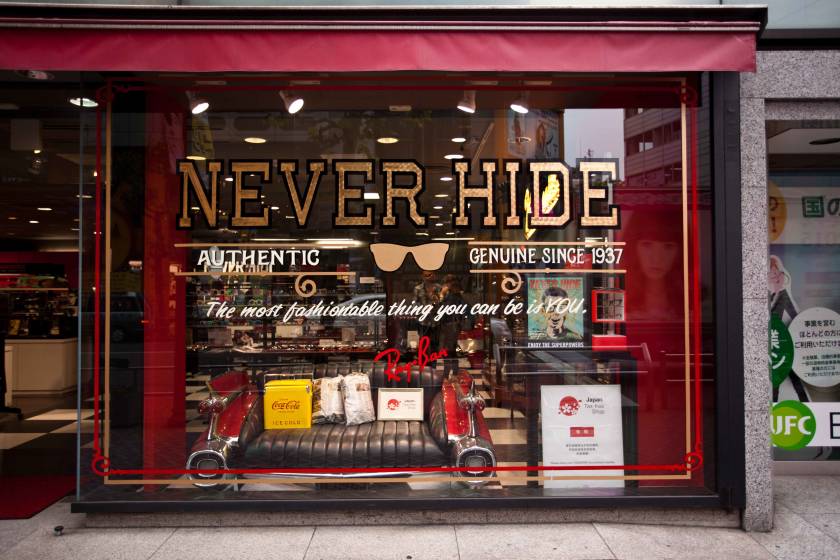
Interestingly both Trophy and Paris Miki use very similar language in their signage. Speaking directly about authenticity and quality, both which are associated with brands who use this signage in the West.
A number of small restaurants and interestingly, a hair dresser, in the area of Yoyogi Uehara all use Gilding in their signage. Although smaller in scale to the larger stores these applications still add character to the establishment. The influences of 1950’s typography and sign writing can be seen in all these examples.
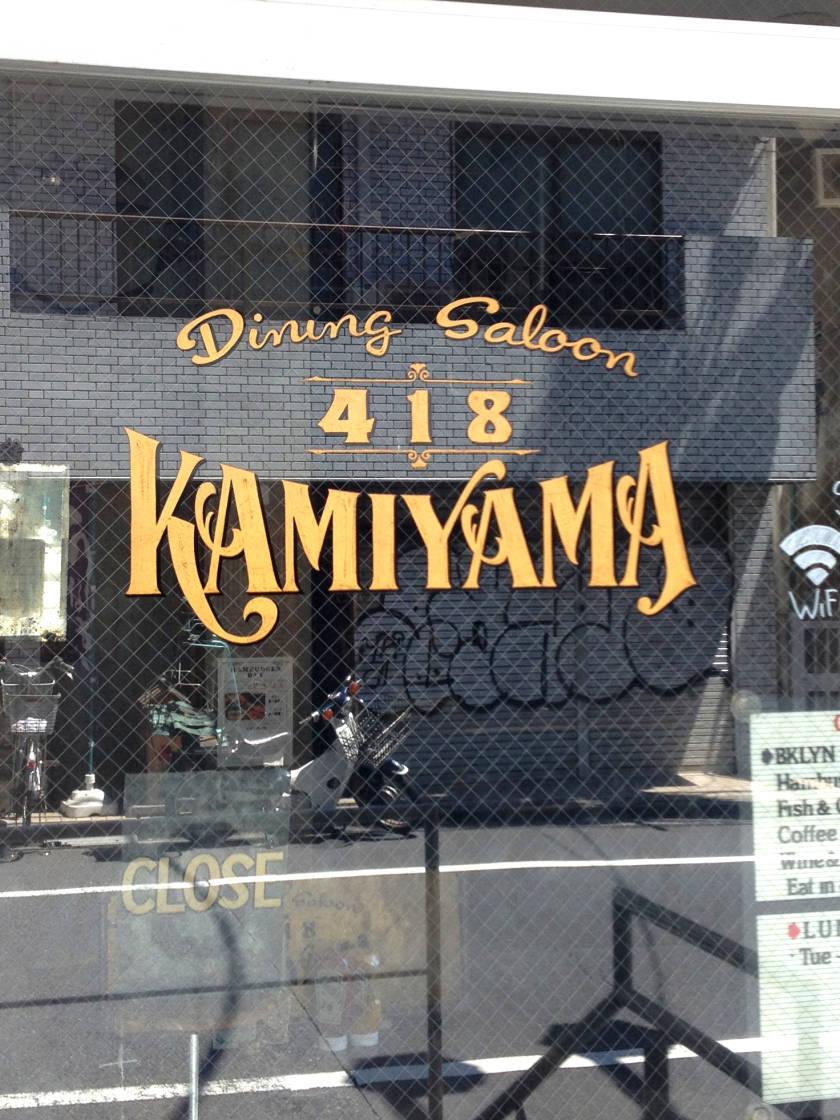
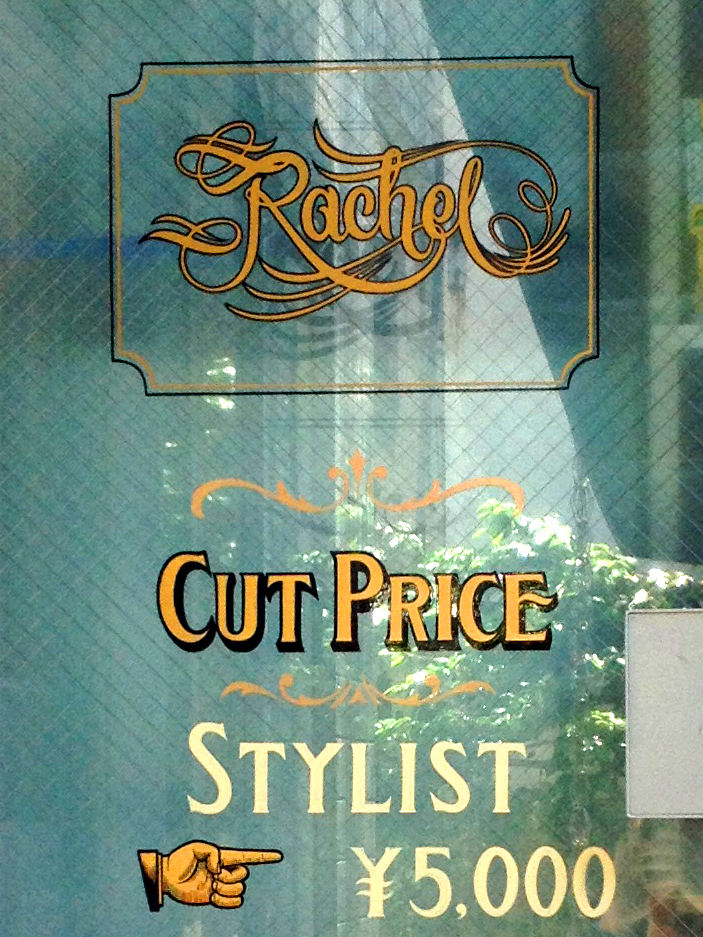

When applied on a smaller scale like this the gilding is still eye catching and it suits the understated frontages of these shops. In some ways it gives them a more boutique and genuine feel than the larger applications which are more commercial.
It would seem that gilding is becoming a trend for niche businesses in Japan who want to make a strong connection to the West with their brand. However, what I have yet to see is Japanese characters treated with classic western sign writing techniques. I think this would make for a very interesting and memorable piece of design.
